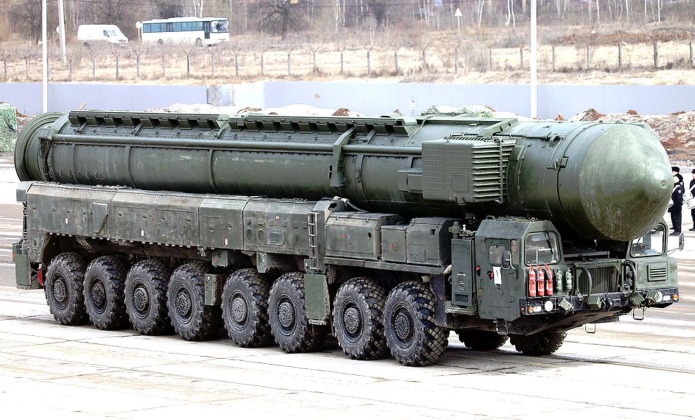News
Russia Test Fires First Ever Sarmat ‘Satan II’ Intercontinental Range Nuclear Missile as Standoff with NATO Intensifies
On April 20 Russia test launched the Sarmat ground based intercontinental range ballistic missile (ICBM), which marked the first ever flight of the long anticipated weapon and saw it strike a target test range on the Kamchatka Peninsula nearly 6000km across Russia. Russian President Vladimir Putin commented on the capabilities of the missile, stating: “The new complex has the highest tactical and technical characteristics and is capable of overcoming all modern means of anti-missile defence. It has no analogues in the world and won’t have for a long time to come. This truly unique weapon will strengthen the combat potential of our armed forces, reliably ensure Russia’s security from external threats and provide food for thought for those who, in the heat of frenzied aggressive rhetoric, try to threaten our country.” The test and accompanying statement came at a time of intensifying tensions between Russia and the Western world, with the Russian-Ukrainian War that broke out on February 24, and weeks before Western support for anti government forces in Russia’s ally Belarus, being central to the conflict.

Head of the Roscosmos space agency Dmitry Rogozin stated on April 20 that the Sarmat would begin deliveries to the Russian Armed Forces in the autumn, with the new missile being the heaviest in the world at over 208 tons and deploying from fortified silos rather than mobile launch vehicles. With a 18,000 km range, and carrying up to 15 multiple independent reentry vehicles each, the missile is considered the most potent in Russia and likely worldwide with a single hit potentially able to devastate an area greater than the size of France. Dubbed ‘Satan II’ in the West, the missile is intended to replace the ‘Satan’ ICBM currently deployed from Russian missile silos and will likely represent 100 percent of Russia’s fixed site land based arsenal. The Sarmat is complemented by increasingly capable lighter road mobile ICBMs most notably the RS-24 Yars, which entered service in 2010 but is under one quarter of the weight and has around two thirds of the range and just 4-6 warheads. The Sarmat is expected to deploy Avangard hypersonic glide vehicles in its terminal stage to be able to more reliably evade interception. Strategic nuclear forces have been strongly prioritised for Russia’s military modernisation since the collapse of the Soviet Union and contraction of the country’s economy, research and development, and general defence sector placed greater restrictions on its conventional arsenal.












